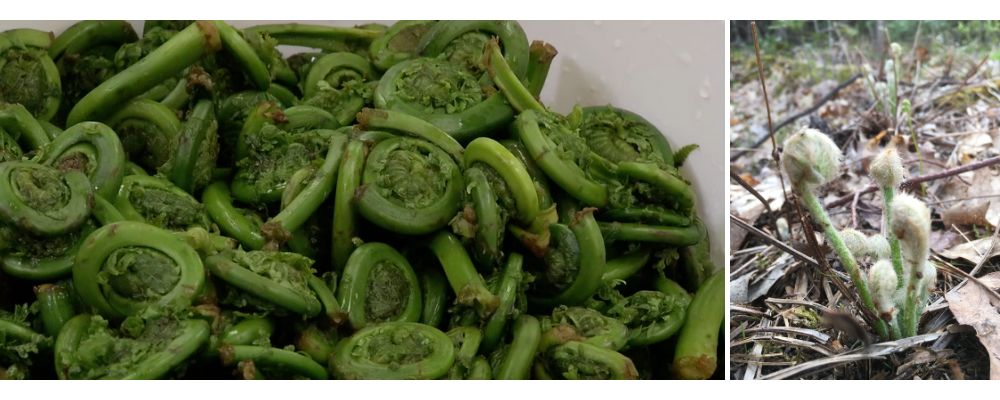
Fiddleheads and Food Safety
— By Kathy Savoie, Extension Professor, University of Maine Cooperative Extension
Fiddleheads—you either love them or don’t want them anywhere near your plate! My family loves them, so we’ve had many spring adventures along riverbanks, streams, and brooks during early May in pursuit of these delicacies. Like all enthusiasts, I can’t reveal my secret place.
Warning: make sure you are picking the fiddlehead variety that is edible. The Ostrich Fern fiddleheads are the edible variety you are looking for and they can be identified by the brown, papery scale-like covering on the uncoiled fern. They also have a smooth fern stem (not fuzzy), and a deep “U”-shaped groove on the inside of the fern stem. Pick tightly coiled fiddleheads and make sure to leave a few fiddleheads on the plant to support future growth.
Another thing about fiddleheads: they MUST be cooked! Several foodborne illnesses have occurred as a result of consuming raw or undercooked fiddleheads. The recommendations for cooking are to either boil or steam fiddleheads for a specific amount of time (boil for 15 minutes or steam for 10 – 12 minutes).
Cleaning the fiddleheads comes first though. Cleaning the fiddleheads requires removing that tell-tale brown, papery-scale-like covering. This is a somewhat tedious task that requires a lot of rinsing to unveil the vibrant spring green fiddlehead.
I prefer to steam fiddleheads in a steamer basket in a pot with a lid for the full 12 minutes. Next is the joy of eating them with vinegar, butter, salt, and pepper. We have other recipes on our Bulletin #4198 Facts on Fiddleheads. This fact sheet also covers preserving fiddleheads which is a great way to preserve these gems for use later on. They can be frozen or pickled. We have recipes for a variety of fiddlehead pickles…plain, garlic dill, sweet, quick sour, and even bread and butter! We also have a Cooking and Preserving Fiddleheads video tutorial that covers all the basics of cooking and preserving fiddleheads.
